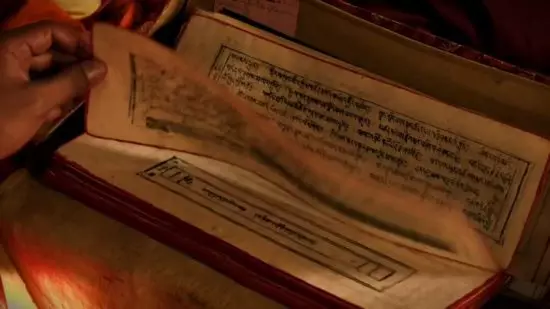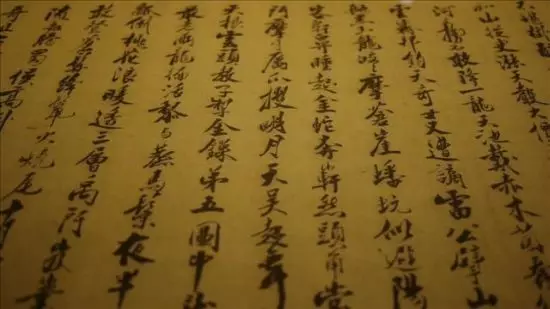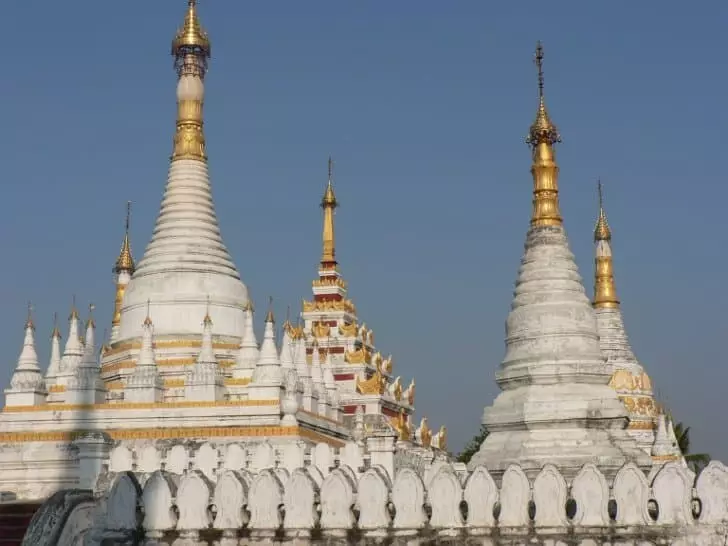Each spiritual teaching has its own sacred books, in which the foundations of religion are recorded. However, it is not so simple with Buddhism, because this spiritual teaching is divided into several directions that differ significantly from each other. Take at least the religion of Bon, which also gives himself to Buddhism, but is not recognized by the Dalai Lama. Sometimes a sustainable impression is created that various directions in Buddhism are different religions.
My friend made a recent pilgrimage to the Kingdom of Mustang (Nepal) and brought incredible impressions of the Bon religion, which existed in Tibet long before the birth of Gautam Siddhartha - founder of Buddhism. Today I will tell you what the sacred book of Buddhism is the main and as it is called. So that there are no confusion in this matter, we will also consider briefly all the well-known Buddhist sources.

Various directions in Buddhism
Find out what awaits you today - a horoscope for today for all zodiac signsBy numerous subscribers requests, we have prepared an accurate horoscope application for a mobile phone. Forecasts will come for your zodiac sign every morning - it is impossible to miss!
Download free: Horoscope for every day 2020 (Available on Android)
If you communicate with the representative of Religion Bon, then hear about the existence of a multitude of perfume. Trillions of spirits dwell on Earth, in each subject a separate spiritual essence lives. Scientists believe that the Bon belongs to shamanism, since it is precisely for him closely "cooperation" with spirits.
However, the inaccurable person will easily be misled by the reading of the Mantra and the monasteries of representatives of Religion Bon, which are difficult to distinguish from the classic Buddhism founded by Gauta Buddha. Because the word "Buddha" is translated as "awakened", and those of themselves are called absolutely everything in Tibet - and representatives of Religion Bon, including.
Considering the question of Buddhism, it is worth mentioning about the direction of Zen, which differs from the classic dipping and a bold approach to understanding the fundamental Buddhist truths. Some researchers do not believe without reason that the differences in Buddhism are something similar to differences in Christianity. For example, the Protestant direction and Orthodoxy can be viewed as completely different religions, although they have a single God - Jesus Christ. Something similar happens in Buddhism.
Tripitak - Sacred Book of Buddhism
Classic Buddhism recognizes the sacred truck - the arch of Buddhist canons, written after the death of Gautama Buddha.
On a note! There are three common versions of trucks that belong to the Indian, Chinese and Tibetan tradition.
Pali (Indian) option is most popular - Titrificent. It was he who remained completely. The book consists of three sections:
- Power Vinala;
- Power Sutra;
- Abhidharma Power Power.
The truck in translation denotes - 3 baskets. Previously, the sacred texts were kept in baskets of palm leaves, hence the characteristic name. However, some researchers believe that the name does not apply to the basket: so on ancient Sanskrit called a collection of something or a collection.
What tells the sacred Scripture of Buddhism? The first book recorded a set of rules regulating the life of the monastic community. This is a detailed instruction, following which should be stupid. In Winal Power, 500 rules were recorded, for which monks and nuns live. The purpose of this book is to preserve harmony and order in a heterogeneous spiritual community.
Power Sutra tells about the life of Gautama Buddha. It consists of 10,000 sutors, the authorship of which is attributed to the very founder of Buddhism and its closest students.
The third section of trucks is the systematization of Buddhist teaching - Dharma, philosophical analysis and various conclusions. This is the theoretical scientific base of Buddhism, in which there is no array of rules and instructions.
On a note! For the first time, the truck was recorded by Buddhist monks Sri Lanka on the prepared palm leaves.
For many years, the teachings of Gautama Buddha were transmitted from mouth to mouth, as was customary in the Hindu tradition. But due to the threat of loss of knowledge, on the first Buddhist meeting it was decided to perpetuate the sacred truths in the book.
The truck remains the only full canon of Buddhist truths. The subsequent directions and the flows of Buddhism did not leave after themselves written monuments worthy of attention.

Chinese truck
This version of the Holy Scriptures was distributed in China, Japan and Vietnam. It has differences from the original source (which is recorded in Sanskrit) and from the Tibetan version. For example, in this variant there are texts that are missing in the Pali version. Buddhologists believe that the Chinese edition appeared earlier than the Pali option and served as the basis for him.Tibetan version
The publication in Tibetan consists of two parts - Gardzhura and Danjura. Gangeshur is based on the presentation of Buddhist truths (canon), and Dudjur comments them. The Tibetan version of trucks pays great importance to the practical approach to the teaching, there is a lot of information on meditative practice and tantra. Lama consider the Tibetan version of trucks as a sacred set of rules.
Korean version
The Koreans have their own special set of rules that they referred to Pokhanman Tagen. This canon was recorded on 6,500 wooden tablets dated 1087 year. However, during the Mongolian invasion, the signs were destroyed almost completely, so the later version of the trucks reached this day, dated 1251. This canon is considered the most complete of all preserved ancient options.
On these versions, the sacred books do not end, because in each locality there was a version of trucks other than others. It is easy to explain to the lack of postal and fast communications between countries. But by the 18th century, the situation has changed: the single canon was finally created, which was perpetuated on stone srices.

Unified TD trucks
In 1780, a Buddhist Cathedral took place in Burma, at which 2.5 thousand monks decided to unify the text of trucks. A lot of work was done on the reconciliation of scattered texts of three different traditions - Hindu, Chinese and Tibetan. As a result, the unified text was recorded on 729 marble plates, in order to perpetuate the truth in unity. For each marble slab with the recorded sacred text, a separate miniature temple was created. The collection of mini temples (stupas) is a temple complex called Kuto-to Payya.This complex is a sacred place for most followers of Buddhism. It is located in Myanmar (Burma), in the city of Mandalay. The temple complex is considered the largest stone book in the world, because it will take 450 days. It took 8 years to build the temple complex, since only 10 lines of the sacred text were carved on the stone.
After a while, near the Temple Complex, the Book Complex of Sadmani Payya was built, in which comments on the boards were immortalized in stone.
In 1900, the truck was printed on paper, resulting in 38 volumes, each of which contains 400 pages.
Conclusion
In the history of the emergence of Buddhist sacred texts there is one delicate moment: which of the sources is genuine, it is not reliably known. This is due to the fact that for many years the doctrine was transferred from the mouth to the mouth and was not recorded. They recorded the text much later when the danger of the distortion of truth in the retold reports of numerous followers of the Buddha appeared.
However, the original sources did not live to the present day, as they were irretrievably lost during the times of Mongolian and Muslim conquests. All Buddhist libraries together with the monasteries mercilessly destroyed. Those texts that have formed the basis of a unified canon may contain significant distortion. But to find out what was the true teachings of Gautama Buddha, the descendants were not destined.
